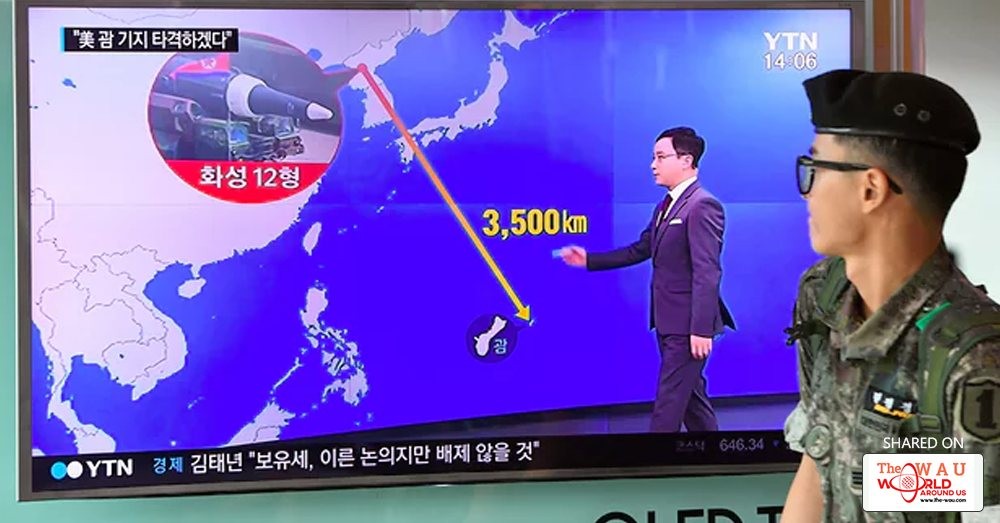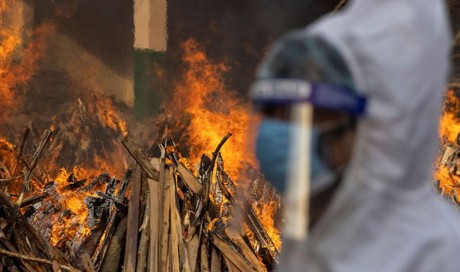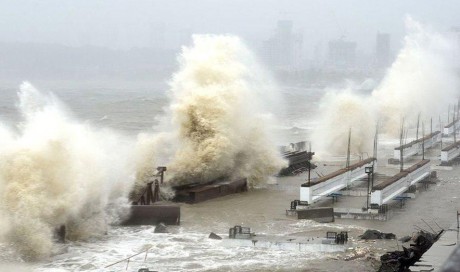North Korea has defied threats of “fire and fury” from Donald Trump, deriding his warning as a “load of nonsense” and announcing a detailed plan to launch missiles aimed at the waters off the coast of the US Pacific territory of Guam.
A statement attributed to General Kim Rak Gyom, the head of the country’s strategic forces, declared: “Sound dialogue is not possible with such a guy bereft of reason and only absolute force can work on him”. The general outlined a plan to carry out a demonstration launch of four intermediate-range missiles that would fly over Japan and then land in the sea around Guam, “enveloping” the island.
“The Hwasong-12 rockets to be launched by the KPA [Korean People’s Army] will cross the sky above Shimani, Hiroshima and Koichi prefectures of Japan,” the statement said. “They will fly for 3,356.7 km for 1,065 seconds and hit the waters 30 to 40km away from Guam.”
The statement said the plan for this show of force would be ready by the middle of this month and then await orders from the commander-in-chief, Kim Jong-un.

The statement was clearly designed as a show of bravado, calling the Trump administration’s bluff after the president’s threat and a statement from the defence secretary, James Mattis, both stressing the overwhelming power of the US military. “North Korea best not make any more threats to the United States. They will be met by fire and fury like the world has never seen,” Trump said on Wednesday.
The response from Pyongyang was its most public and detailed threat to date, and evidently meant to goad the US president. Trump had “let out a load of nonsense about ‘fire and fury’ failing to grasp the ongoing grave situation. This is extremely getting on the nerves of the infuriated Hwasong artillerymen of the KPA.”
The US has a naval base in Guam and the island is home to Andersen air base, which has six B-1B heavy bombers. According to NBC news the non-nuclear bombers have made 11 practice sorties since May in readiness for a potential strike on North Korea. The remote island is home to 162,000 people.
Why is North Korea threatening Guam?
Guam, a 210 sq mile (544 sq km) sovereign US territory in the western Pacific Ocean, is used by the US as a strategic military base. Almost a third of its land is controlled by the US military and about 6,000 American troops are based there.
Analysis North Korea v the US: how likely is war?
Donald Trump has promised ‘fire and fury’; Kim Jong-un has threatened a missile strike on Guam. But experts say bluster might not lead to conflict
Its location, within range of North Korean medium- and long-range missiles, and military significance to the US make it a logical target for Pyongyang.
As recently as Monday, two US air force B-1B bombers flew from Guam to join their counterparts from South Korea and Japan for a mission over the Korean peninsula, about 2,100 miles away, in which the air forces practised various manoeuvres.
Last month, in another show of force, the US twice flew a pair of supersonic bombers that took off from Guam over the Korean peninsula after two North Korean tests of intercontinental ballistic missiles.
The island is incredibly remote: the nearest significant population is in the Federated States of Micronesia, about 570 miles away. Beyond that, Papua New Guinea is 1,400 miles away, the Philippines are 1,600 miles from its shores and Japan 1,623 miles.
Approximately 40% of Guam’s population, estimated in 2015 to be around 162,000, is made up of the indigenous Chamorro people, while another 25% are Filipino.
Though there has been some resistance and displeasure from the people of Guam over the US military’s presence, it is also essential to the island’s economy, second only to tourism.
According the island’s official tourism website, it is a destination like no other, with “star-sand beaches, crystal clear blue skies and world-famous sunsets”.
Guam was claimed by Spain in 1565 and became a US territory in 1898 during the Spanish-American War.
Japan seized it for about two and a half years during the second world war. In 1950, an act of Congress made it an unincorporated organised territory of the United States.
It has limited self-government, with a popularly elected governor, small legislature, and non-voting delegate in the US House of Representatives. Residents do not pay US income taxes or vote in the general election for US president but its natives are US citizens by birth.
The US keeps a naval base and coastguard station in the south, and an air force base in the north, which was used during the Vietnam war.
Protecting the island is the US Army’s Terminal High-Altitude Area Defence, or Thaad, which is used to shoot down ballistic missiles.
Guam’s capital city is Hagåtña and its largest city is Dededo. Its chief languages are English and Chamorro. There have been various popular movements pushing for greater self-government or even US statehood, most notably a significant but failed effort in the 1980s to make it a commonwealth on par with Puerto Rico.
South Korea’s military said on Thursday that North Korea’s statements were a challenge against Seoul and the US-South Korea alliance. Joint chiefs of staff spokesman Roh Jae-cheon told a media briefing that South Korea was prepared to act immediately against any North Korean provocation.
Japan’s chief government spokesman said the country could “never tolerate this”. “North Korea’s actions are obviously provocative to the region as well as to the security of the international community,” Yoshihide Sug said.
The announcement on the North Korean state news service KCNA came at the end of two days of brinksmanship which began with the leak of a US intelligence report that Pyongyang had developed a nuclear warhead small enough to put on a missile. This was followed by Trump’s warning of “fire and fury”. On Wednesday the US defence secretary, James Mattis, said a North Korean attack would risk the “end of its regime and the destruction of its people”.
In the event of such a launch by North Korea, the US military faces the dilemma of trying to intercept the incoming missiles and risking humiliation if it fails. Trump would have to decide whether to try to a carry out a pre-emptive strike on the Hwasong launchpads or a retaliation strike if the launch went ahead. The North Korean military has frequently tested missiles that land in the sea off the Japanese coast, without a military response from Tokyo.
“For the [North Koreans] to telegraph a move like this is extraordinary. But it’s probably their way of trying not to trigger a war,” said Joshua Pollack, a senior research associate at Middlebury Institute of International Studies at Monterey. He said that if the launch went ahead as laid out in the statement, legal restrictions on shooting down missile tests might not apply.
“The reason you can’t shoot down a test is that it doesn’t enter a defended area. But that wouldn’t be the case with ‘bracketing fire’,” Pollack said in a thread of tweets. He argued that the exchange of threats and the missile plans underlined the need to open a military hotline between the US and North Korea to mitigate the dangers of catastrophic miscalculation by either side.
“If they do carry out that plan, both sides might discover that they need a crisis management mechanism sooner than not,” Pollack said.
What are North Korea's nuclear capabilities?
Mattis’s reminder to Pyongyang that the allied militaries “possess the most precise, rehearsed and robust defensive and offensive capabilities on Earth” capped an unprecedented 24 hours of sabre-rattling sparked by Donald Trump’s surprise threat to rain “fire and fury” down on the Pyongyang regime.
Despite the harsh rhetoric, there was no change in US military deployments or alert status. Mattis couched his remarks in the language of traditional deterrence, making clear that such overwhelming force would be used in the event of a North Korean attack.
Trump – without consulting his own security staff – had warned of a devastating onslaught “like the world has never seen” if Kim’s government persisted in threats against the US. But that line was crossed within hours when Pyongyang announced it was “carefully examining” a plan for a missile strike and “enveloping fire” around Guam.
The US secretary of state, Rex Tillerson, also spent much of Wednesday struggling to contain the fallout from Trump’s threats, assuring Americans they could “sleep well at night”, and reassuring shocked allies that there was “no imminent threat of war”.
Share This Post















